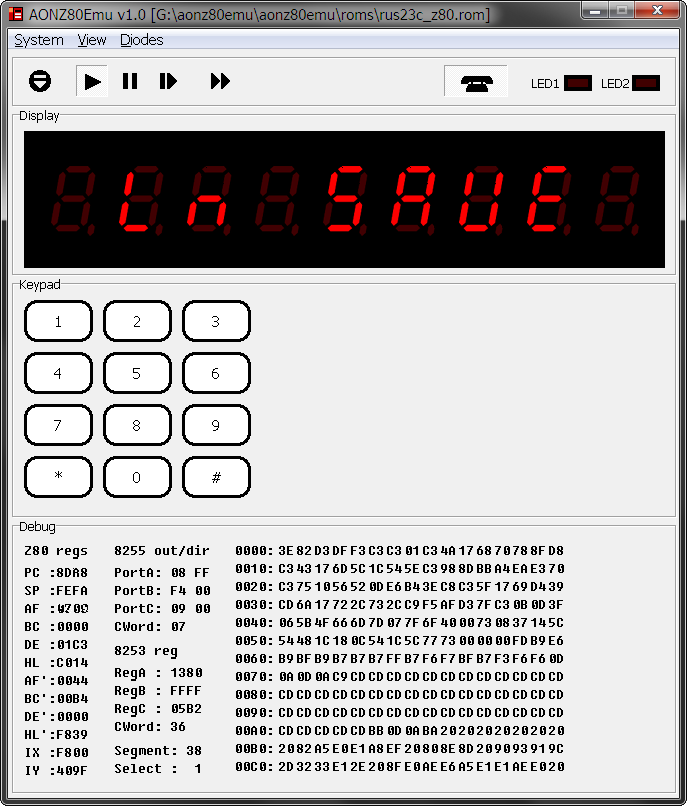Got yet another unit, nothing to show really, but it is an old large Z80 board build with one of the oldest firmwares - Arctur 36. Tried to find this one on the webs, and alas, all dumps is now gone. So I dumped it (it is very different from all others), the ROM was unstable, so I had to stare to the hex compare quite a bit. This way I figured that I may seek for hidden messages in firmwares. And there is indeed some! Here is the list for your digital Indiana Jones pleasure.
Fortuna
Fortuna. (C) Copyright 1995.....Digital voice from version "Selena", special thanx !....Illegal copying is strictly prohibited !!!....Hacker - Alex Taran 2:461/256.11 @FidoNet....Phone number (0572) 62-32-79 (24h)
Arctur 36
(p) S.Batalov 095-939.75.05: Improvements, settling to 2764, voice adjusted.
Ravel19f
Corrected by FALCON inc. 7-095-404-6807
Rus7
KMON-U-Overlay read error
Rus13p
Thanx 2 Selena8!
Rus19e
(c) 1995 by RAVEL
Rus20c
(c) 1995 by PASHA. Tel:(095)-251-17-80
Rus20e
(c) 1991-1995 by PASHA, SERGEY. Tel:(095)-251-17-80
Rus20f
(c) 1991-1996 by PASHA, SERGEY. Tel: (095) 268-22-81, 268-28-74
Rus22c
(c) 1991-1996 by PASHA, SERGEY. Tel: (095) 268-09-33
Rus23c (transliterated from Russian)
(c) 1991-97 Pavel Sukhodolsky, Sergey Kosov Tel:(095)2680933 Moscow
Julia25pr
JULIA-25 (C) Copyright Alex Serov (Nj/VIMS), 1993-96..... FidoNet: 2:461/256.111 (Aka 2:461/144.11)....Digital voice from version "Selena", special thanx !....Special thanx to Alex Taran, 2:461/256.11 @FidoNet
Julia27dp
JULIA-27 d (C) Copyright Alex Serov (Nj/VIMS), 1993-97.....FidoNet: 2:461/60.1....Digital voice from version "Selena", special thanx !....Special thanx to Alex Taran, 2:461/60 @FidoNet
Julia27f
JULIA-27 F (C) Copyright Alex Serov (Nj/VIMS), 1993-98.....FidoNet: 2:461/60.1, E-Mail: heiki@iName.com....Digital voice from version "Selena", special thanx !....Special thanx to Alex Taran, FidoNet: 2:461/60, E-Mail: alex@dnp.ukrpack.net....Very big thanx to PS Design, Kharkov
Julia27lp
JULIA-27 L (C) Copyright Alex Serov (Nj/VIMS), 1993-99. <Nin_Alex@email.com>....For all questions about distributing, future versions, hardware..please refer to Boris (PS Design, Kharkov). E-Mail: <maxlab@kharkov.com>
